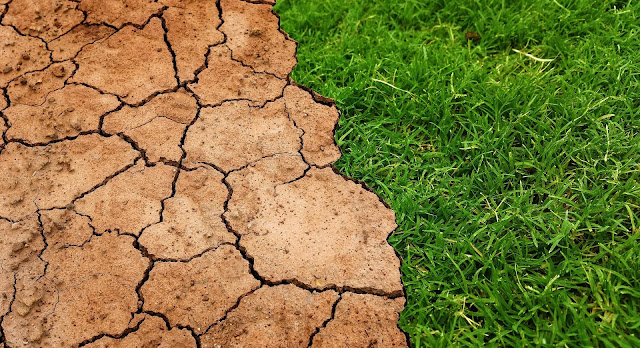Global food security is dependent on land that is fertile enough to grow crops, but due to various factors including climate change, deforestation, fragile eco systems, mining and soil pollution, we are losing fertile land to dessert. This is called desertification. It is defined as a process of land degradation in arid, semi arid and sub humid areas. Desertification affects top soil, groundwater reserves, human, animal and plant populations, and according to UNESCO, one third of the world's surface is threatened by desertification!
While many of us might think that it doesn't affect me, just think of the shortages of tomatoes, cucumbers, leeks etc from countries like Spain whose crops have suffered with extreme weather conditions this winter. In 1994 The United Nations established The Convention to Combat Desertification (UNCCD) , through which 122 countries have committed to Land Degradation Neutrality, to encourage research into solutions.
Non government organisations (NGO) are internationally funded schemes to give assistance to local farmers in the poorest areas in the world. For example, The Eden Foundation was set up in Sweden in 1985. It has helped 20,000 families in the Dalli region in Niger which is one of the driest countries in the world, and is suffering from desertification. Eden's solution is to plant trees and bushes that grow naturally in the area, which stabilises the soil, prevents erosion, helps retain surface water and increase crop yields. The farmers order from a list of Eden's species and also receive free crop seeds. this process now enables farmers to feed their families and local communities.

Farmer in Niger by Alex Burley, Unsplash
Scientists at Chongqing University in China, have, since 2009, been working on Soilization Technology, a process of transforming granular material (sand & soil) and integrating the functions of sand prevention, and ecological recovery. They have developed ODI Constraint Material which is a water based paste combined with with cellulose (plant extracts), and when mixed with sand, it gives the material similar properties to soil which has solid state when dry and rheological (able to hold a form) when wet, which allows crops to grow, and as the roots of the crops decay, the soilized sand becomes self sustaining.
After many years of experimentation, the scientists have found that soilizing desert areas has had a significant effect on biodiversity and ecological recovery. In addition to the varied species of plants and crops now growing, many species of birds, mice, rabbits, frogs and worms have been found living in the soilized areas.
ODI Constraint Material is patented in China, Australia and Morocco, with many other patents pending.

Photo by Brad Helmink, Unsplash
Resources: Chongqing University, China, National Geographic, Conserve-energy-future.com, BBC Bitesize






















